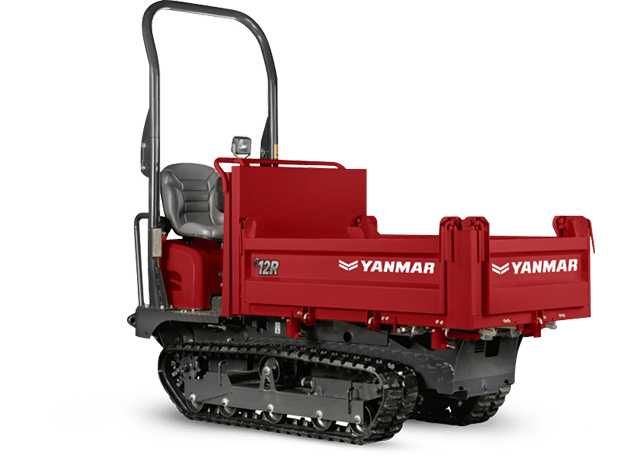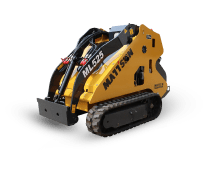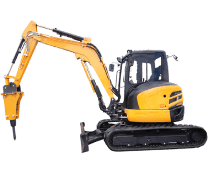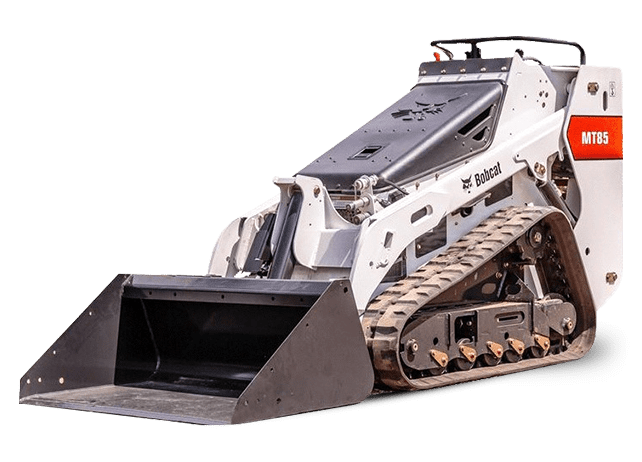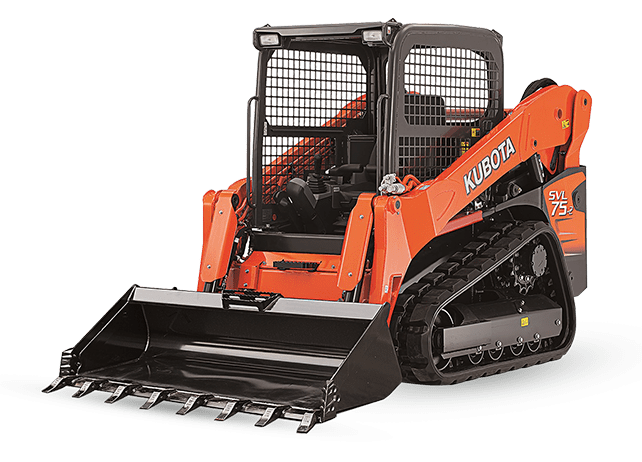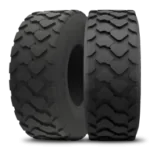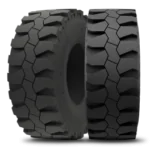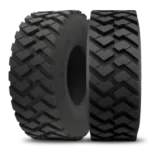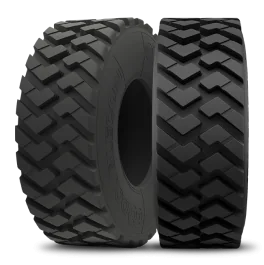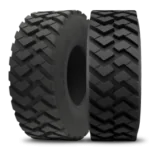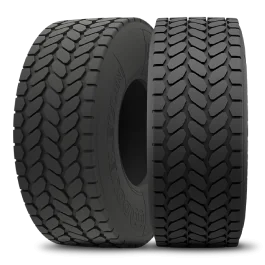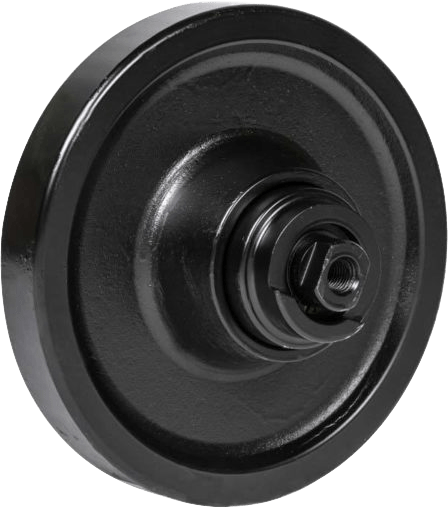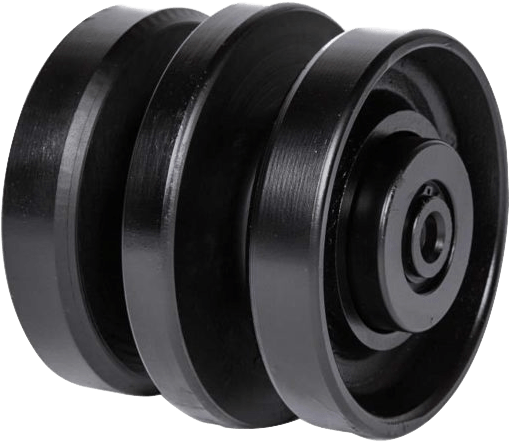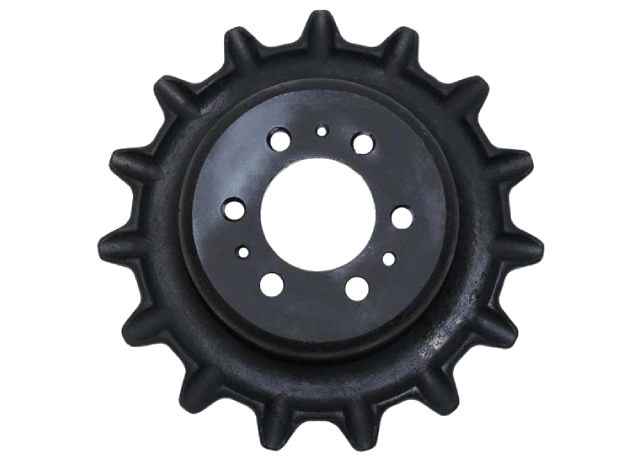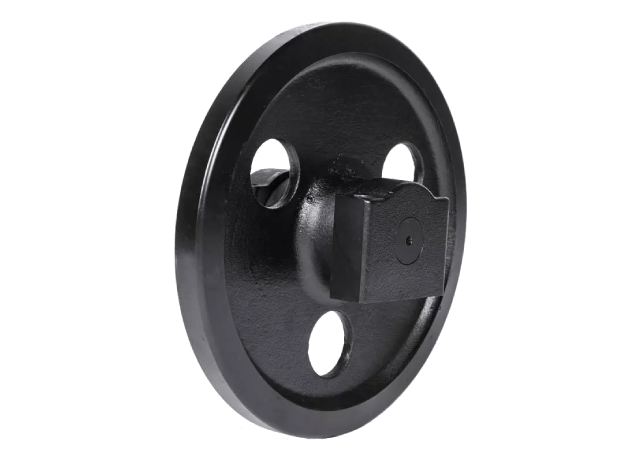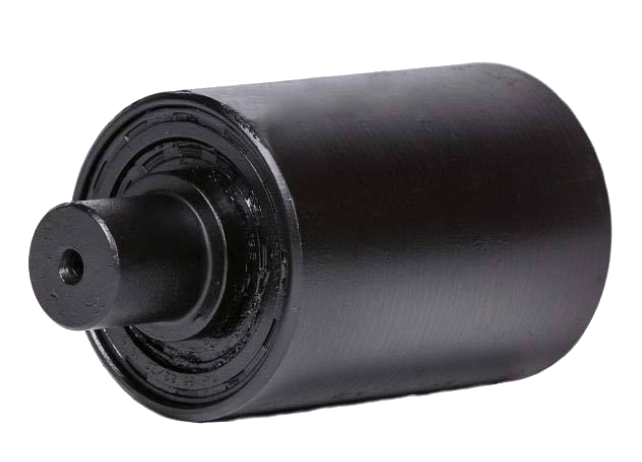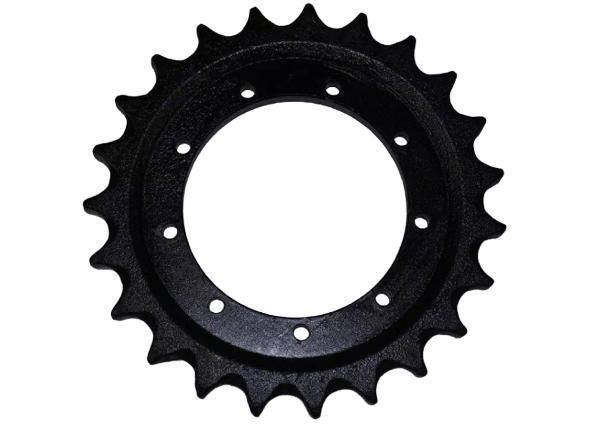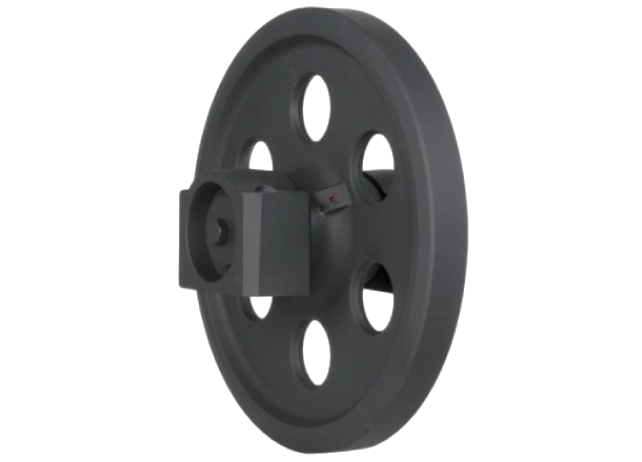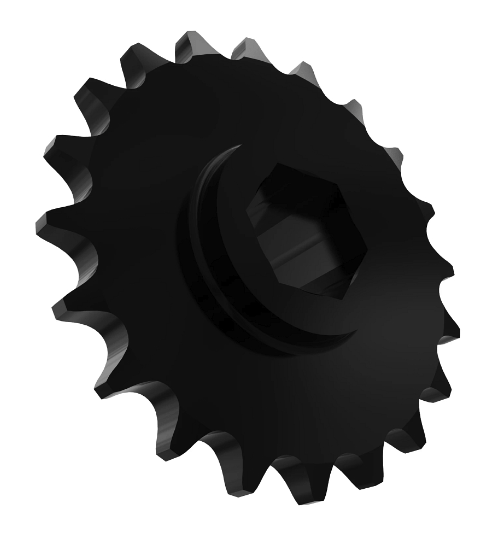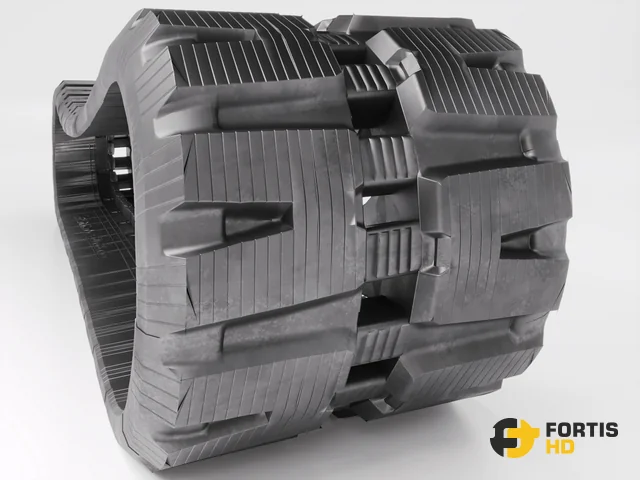Skid steer tracks engage with the idler wheels, rollers, and the sprocket to give exceptional grip and stability to skid steers, especially when working on tough, uneven, and soft terrain like mud, snow, sand, rocky ground, and slopes.
Although there are countless sizes, applications, structures, and materials, the purpose is to provide traction, flotation, and stability.
Let’s break down skid steer tracks in the context of their applications, adaptability to different work environments, how they differ from tires, their productivity and safety benefits.
Table of Content
Understanding the Basics of Skid Steer Tracks
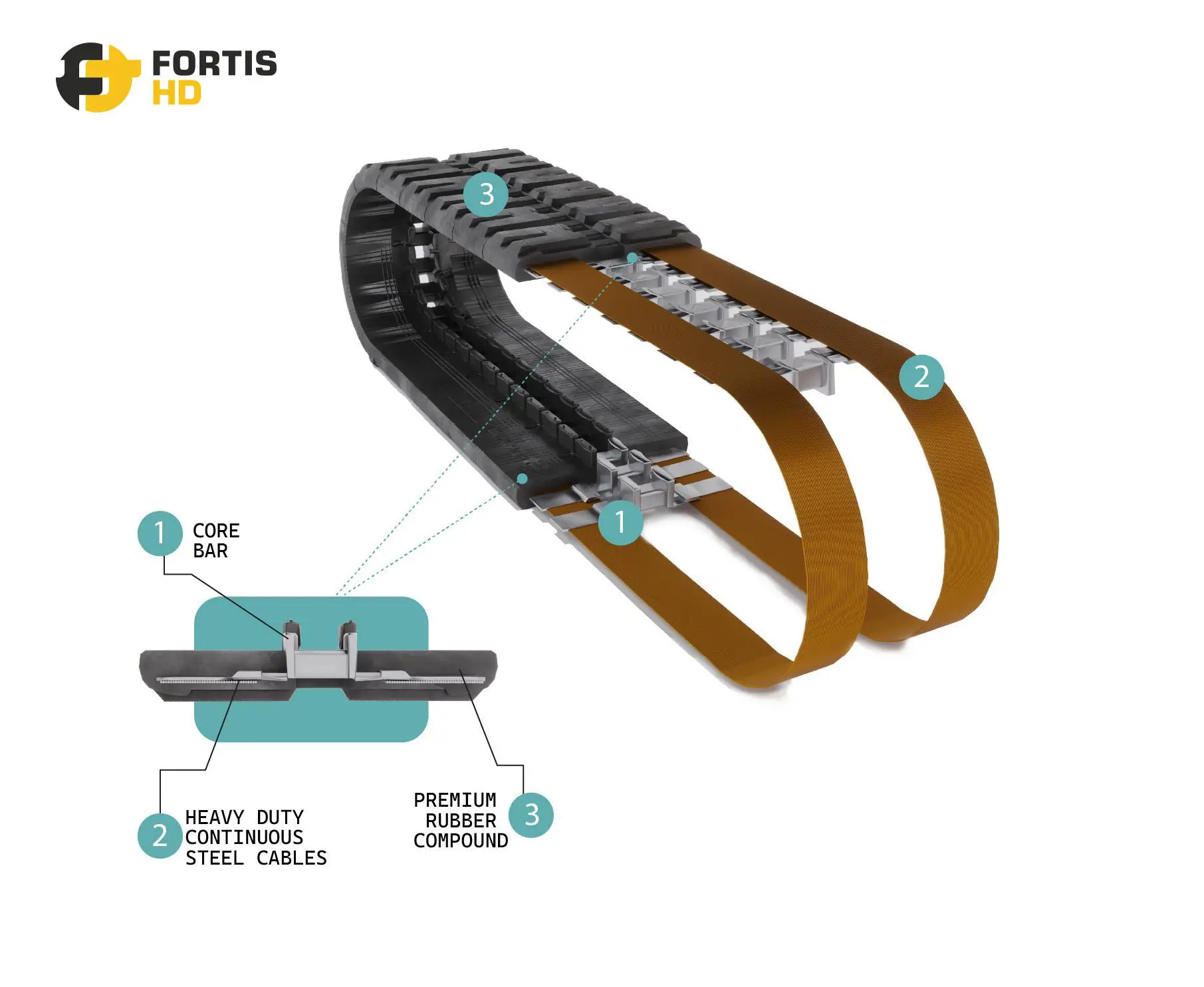
Skid steer tracks comprise the rubber body and its internal reinforcement—the variation of those two components results in a wide range of designs.
Components
Skid steer tracks are more than just a big rubber band.
Their design and manufacturing process makes them withstand high forces and harsh conditions during many hours of operation–1,000 to 2,000 hours.
Skid steer tracks consist of the following:
The Rubber Compound
The compound is a natural and synthetic rubber blend, plus additives to enhance its durability, strength, and resistance to various environmental factors.
Natural rubber offers tensile strength and elasticity. On the other hand, synthetic rubber provides enhanced resistance to tear, abrasion, heat, chemicals, and weather conditions.
The additives enhance final product properties and consist of carbon black, sulfur, vulcanization agents, antioxidants, antiozonants, plasticizers, oils, and fillers.
The specific contributions of the most common additives in the manufacturing process are:
- Carbon black reinforces the rubber by increasing the hardness, tensile strength and resistance to abrasion, wear, UV light, and ozone, which are crucial for outdoor applications.
- Along with carbon black or as an alternative, silica enhances thermal stability and wet grip and reduces rolling resistance. Silica is particularly useful in applications where heat buildup is a concern, like working on high-friction terrains such as hot asphalt or concrete.
- Sulfur is a vulcanizing agent that helps create “bridges” (cross-links) between the polymer chains in rubber, significantly improving the rubber’s strength, elasticity, and durability.
- Antioxidants and antiozonants protect the vulcanized rubber from aging, oxidation, and ozone degradation.
- Clay and calcium carbonate economically increase the volume of the compound and make it easier to handle and shape during manufacturing. They contribute to the durability of the tracks, especially in terms of wear and tear resistance, leading to more efficient production and higher-quality end products.
- Talc, mica, and glass fibers also impact properties like heat resistance, stiffness, and dimensional stability–the ability of the tracks to maintain their shape and size over time and under various conditions.
- Accelerators, activators, and retarders are vulcanization chemicals that enhance the effectiveness and efficiency of the process, reducing the time and temperature and preventing the compound from scorching. Scorch is when the rubber compound vulcanizes too early and gets difficult to process because it cures and hardens.
- Plasticizers increase the flexibility of the rubber, allowing the track to bend and move over rough and uneven terrain without cracking or breaking.
- Oils make the compound more pliable and easier to work with during manufacturing.
The Cables Reinforcement
Although the rubber compound is strong, it still can break or stretch out of shape under heavy loads.
The solution is adding two layers of steel cables to the track (whose diameters range from 1/16″ to 3/8″) to increase its strength significantly.
The cables work along the rubber compound thanks to an adhesive that cures under heat and pressure during the vulcanization process to create a strong bond.
Skid steer track cables are multi-strand and have high tensile strength. Both factors increase the track’s strength and maintain its flexibility without adding excessive weight. How?
First, the high-tensile steel cables contain specific proportions of carbon and alloying elements like manganese, silicon, chromium, nickel, and molybdenum. The mix enhances the steel’s strength without increasing its density. Thus, high-tensile steel provides greater strength with small quantities of material.
The reinforcing cables are also multi-strand. Multiple wires are twisted together to form a strand, and several strands are twisted to form the cable. The helical structure contributes to the strength and prevents the cable from unraveling under tension.
Despite being strong, the cables maintain a certain level of flexibility, allowing the track to bend around the machinery’s undercarriage and conform to the terrain irregularities.
Cables can have a zinc or copper coating to further increase their durability, especially against corrosion.
The Internal Plies
Skid steer tracks can have internal layers of nylon or other synthetic fibers.
The plies lay in specific directions to maximize strength and durability.
Other purposes of the internal plies are:
- Help the track to withstand stretching and tearing.
- Maintain shape and stability under heavy loads.
- Evenly distribute the loads and stresses across the track, preventing excessive wear in any area.
The Steel Inserts
The inserts, also known as links or embeds, have three main purposes:
- Engage with the sprocket teeth for traction while aligning the track to prevent derailment.
- Help distribute the machine’s weight and loads evenly, contributing to the traction and stability of the skid steer.
- Protect the track from stretching excessively and wear rapidly.
The inserts are of high-strength steel alloy. Their manufacturing process includes heat treatment and drop forging. Both techniques are relevant because they greatly increase the quality of the inserts.
The heat treatment involves heating the steel to a high temperature and cooling it under controlled conditions, changing the microstructure of the steel to enhance its strength and durability properties against fatigue–failing due to repeated stress cycles. Fatigue failures are common in components of moving machinery.
Drop forging involves heating metal until it is malleable and putting it into a pair of impression dies while a drop hammer (power hammer) compresses it into complex shapes.
The drop forging technique often produces stronger steel than other methods due to several key factors:
- Plastic deformation optimizes the grain structure along the lines of stress. The name of the structure realignment is known as “grain refinement.”
- The hammering process eliminates the steel’s voids, porosities, cracks, and impurities for a more uniform and compact structure–steel densification.
Designs
By altering individual components, you can get different track designs regarding strength, resistance, and flexibility.
First, most rubber track manufacturers have their own proprietary rubber compound mixes.
The variation of the rubber compound composition will result in tracks for specific applications and environments.
There are tracks with abrasive, temperature, chemical, ozone and UV light resistance, or a combination. Others can endure better heavy forces without breaking.
The arrangement, strand configuration, and wire diameter of steel cables lead to more flexible or strong tracks, depending on the application and the skid steer model.
There are two ways of laying the inner cables: with overlaps or as a continuous wound.
Overlapped inner cables would be enough for light-duty applications like agriculture and construction. Continuous wound cables, typically for heavy-duty jobs like mining and earthmoving, improve the strength distribution along the track and eliminate joint failures.
The shape of the steel inserts can also vary based on the quality and the machine’s brand and model.
Some steel inserts can have rounded edges to increase the track’s edge cut resistance. The cross-section of the links can lead to a type B or J rail platform track. Based on the lug design, there are conventional or interchangeable tracks. Depending on their layout distance, you can find long-pitch, short-pitch, or anti-vibration tracks.
Lastly, the variation of the track lugs produces different tread patterns, each suitable for specific terrains–mud, rocky, flat, and snowy.
Did you know some rubber track size numbers include letters sharing information about specific components and designs? Read more about it in the post “What do the letters in the rubber track size number mean?“
Types of Skid Steer Tracks Available in the Market
You can find all sorts of tracks in the market to suit your budget and needs.
Want to keep the costs down? Go for rugged economy tracks with basic rubber compounds and materials, simpler designs and fewer features.
Although the upfront cost is higher, premium rubber tracks are a cost-effective choice in the long run thanks to their enhanced durability, superior traction and performance.
The tread pattern design also leads to several products, like snow tracks, turf-friendly, non-marking (for indoor applications), all-season, etc. Some common tread patterns are staggered blocks, multi-bar, zig-zag and hex. Check out our article “ What Are The Best Tracks for Skid Steers to Enhance Performance?” for a deeper explanation of each pattern.
Although rubber tracks are the most common choice for tracked skid steers, you can swap them for steel tracks.
Steel tracks are noisy and much heavier than rubber (800 to 900 lb) but also offer more traction, wear less, and greatly reduce derailment when working on muddy and uneven terrain.
Another option for skid steers is OTT tracks–rubber or steel. You fit them over the existing tires using a ratchet strap and can install them within 30 to 40 min. OTT tracks let you switch from tires to tracks without investing in another piece of heavy equipment.

Visit the Fortis HD rubber tracks section to buy the best OEM certified skid steer tracks with a 100% guaranteed fit and 3-5 day shipping.
Why Are Tracks Used on Skid Steers?
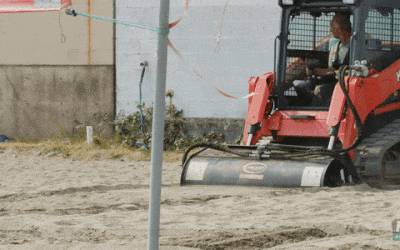
Skid steer tracks improve skid steers’ traction, stability, and flotation when working on challenging terrain and conditions, such as mud, snow, sand, and slopes.
Based on the tread pattern, they can also be a better choice for reducing disturbance on delicate surfaces and indoor jobs.
In a nutshell, skid steer tracks improve performance–on challenging terrains–and are a more versatile option for a wider range of surfaces.
Comparison of Skid Steer Tracks and Tires
Wheels are better for working on flat, hard soil IF weather conditions are favorable.
The wheels’ small ground contact area produces less rolling resistance than tracks, leading to better fuel efficiency, maneuverability, and more speed–wheeled skid steers can double the speed of tracked loaders (13 mph vs 7 mph).
Tires also produce a more comfortable ride than most tracks (which are stiffer), and their higher ground clearance is better when going over pieces of concrete or rocks.
However, the high ground clearance also makes wheeled skid steers tippy and less stable when lifting the same load as their tracked counterparts.
One last aspect of wheels is their elevated ground pressure due to their small contact area. Wheeled skid steers sink on soft ground, making them a good choice for snow plowing jobs (unless you have snow tracks), but not to work on lawns as they will tear them up.
Tracks have a bigger area in contact with the ground than wheels, which spreads out the weight to reduce the ground pressure and increase the machine’s stability and flotation. A higher number of gripping points means more traction, pushing power, and rolling resistance.
Because skid steers wear the rubber off the tracks as they turn, we recommend buying staggered block rubber tracks when working on a high-friction surface.
Tracked skid steers are the right option for excavation and digging jobs, especially on soft and slippery ground or slopes. With the right tread pattern, tracks will also go easy on delicate surfaces like turf.
The Benefits of Using Tracks on Your Skid Steer
Skid steer tracks maximize productivity compared to wheels in almost every way and for most types of terrain.
From a performance perspective, tracks won’t sink, slip, or stumble. They float on soft material, have more grip on slippery terrain, and are stable on uneven ground.
Forget about downtime due to flat tires. Rubber tracks are more resistant than tires, and although they can come off on certain occasions, putting them back is a 30-40 min straightforward process. Check our post “How to Put a Track Back on a Skid Steer” to learn more about derailment.
A teared-up turf or a marked indoor floor will also affect your productivity since you’ll have to spend time fixing your mess. Turf-friendly and non-marking rubber tracks will keep your productivity at its peak on delicate surfaces.
From a safety standpoint, tracks are also better than tires. Skid steer tracks reduce the chances of accidents due to slippage and tipping over while lifting heavy loads.
Real-Life Applications and Success Stories
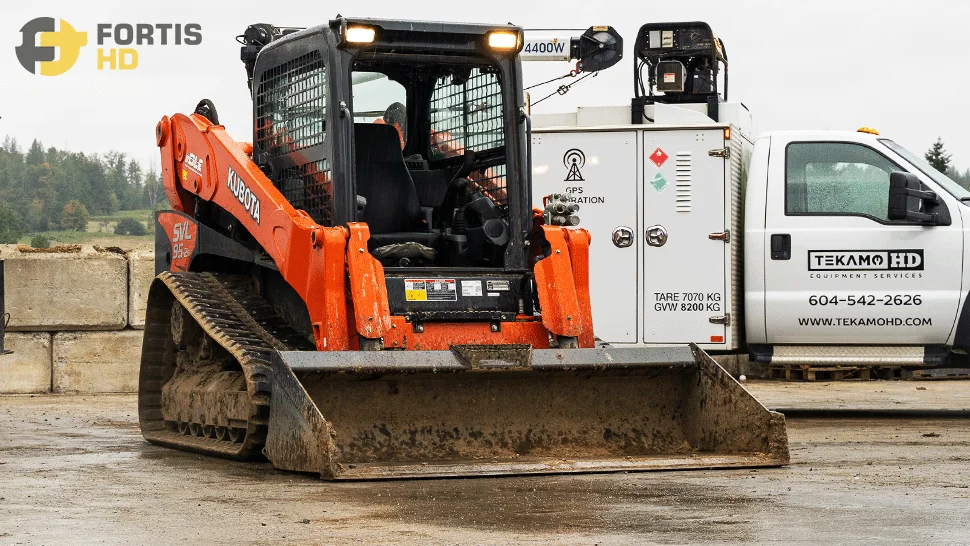
Some common real-life case studies and testimonials showing the benefits of rubber tracks over tires revolve around constantly getting flat tires in demolition or forestry jobs, damaging the soil, or affecting the growth of plants and crops in agriculture, forestry, or lawn landscape applications.
On the website www.heavyequipmentforums.com, most testimonials of skid steer owners show their preference for rubber tracks because flat tires are a constant downtime issue, particularly in their demolition jobs.
The following books present case studies on how rubber tracks have a positive impact on reducing soil compaction and ground disturbance:
Wrapping Up
Skid steer tracks are a versatile option compared to wheels.
Their components and designs offer superior grip, stability, and flotation on challenging terrains. However, harsh terrain conditions will also accelerate their wear and occasionally throw them off the undercarriage.
No worries, though. There are skid steer tracks with premium features to extend their lifespan and reduce the risk of derailment, and we have them at Fortis.
Learn more about our premium tracks in our article What Are the Best Skid Steer Tracks to Reduce Downtime?

